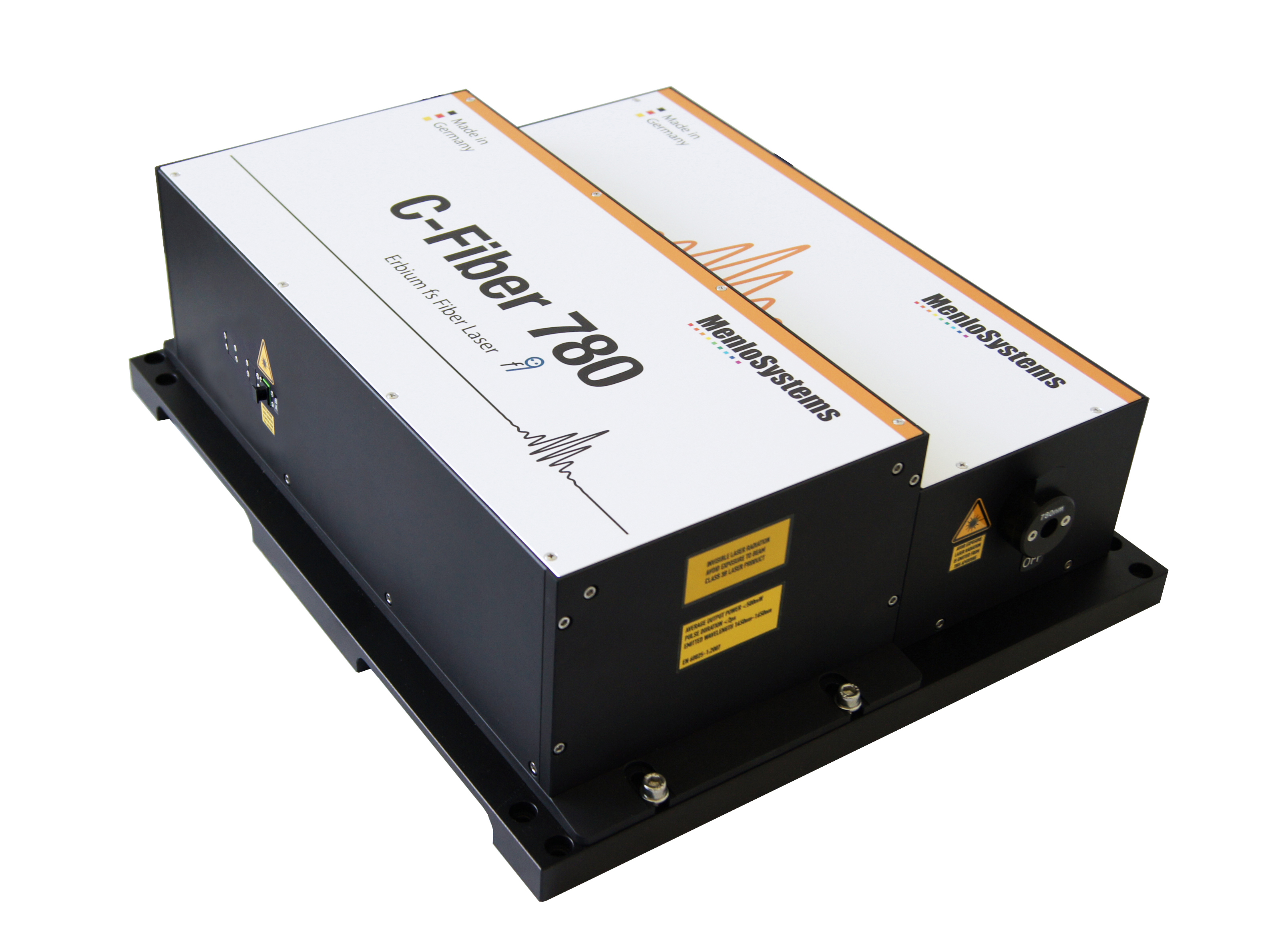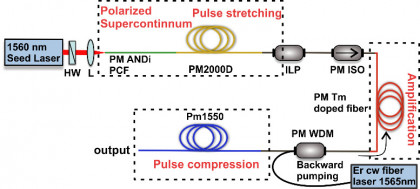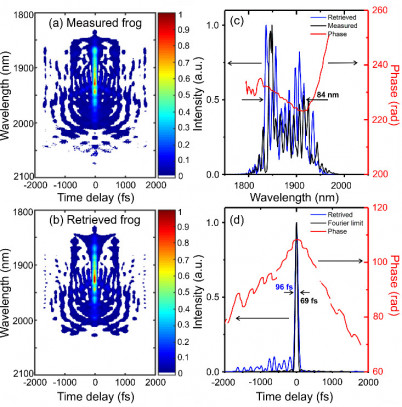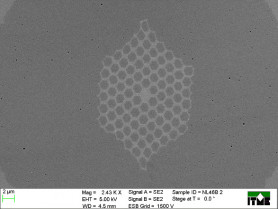Menlo Systems product:

C-Fiber 780 Femtosecond Erbium Laser
Extremely stable source of pulsed infrared light
Modern photonic technologies are crucially dependent on highly stable light sources. In the case of pulsed light, great pains must be taken to ensure that the duration and wavelength of each transitory pulse are maintained over time. An international team working at Institute of Electronic Materials Technology in Warsaw: Dr. hab. Mariusz Klimczak and Anupamaa Rampur, a PhD student under his supervision*, have developed a thulium-doped, polarization-preserving amplifier of chirped ultrashort light pulses that reduces noise to extremely low levels. The instrument setup makes use of a linearly polarized supercontinuum with normal dispersion, which is driven by an ultrafast erbium fiber laser built by Menlo Systems. The amplifier generates 96-fs pulses, centered at 1900 nm, with an average output power of 350 mW.
* Presently, Dr. Anupamaa Rampur is a postdoc at University of Bern in Switzerland, Dr hab. Mariusz Klimczak holds a position at University of Warsaw and the Institute of Electronic Materials Technology has been merged into Łukasiewicz Institute of Microelectronics and Photonics in Warsaw.

Figure 1: Schematic depiction of the amplifier
The potential range of applications of laser-based pulsed infrared radiation in research and technology is immense. The major prerequisite for the realization of this potential is high-precision control of the pulse trains produced by the laser systems involved. An international team of researchers, Dr. hab. Mariusz Klimczak from University of Warsaw and Dr. Anupamaa Rampur from University of Bern have just reported the development of an ultrafast, thulium-doped fiber amplifier for chirped laser pulses, which emits extremely stable pulses at a wavelength of 1900 nanometers, i.e. in the near infrared region of the spectrum.

Figure 2: Characterization of the amplified pulses based on the measured and reconstructed FROG signals (a, b), together with their spectrum (c) and pulse form (d)
The new technique is based on of fiber-chirped pulse amplification (FCPA) (Fig. 1). Femtosecond pulses propagating in a passive (i.e., non-doped) glass fiber are first temporally stretched over nanoseconds by means of positive group-velocity dispersion (GVD), where the blue spectral components of the pulse are delayed with respect to the red components. In the following step, which requires the input of energy, the chirped pulses are amplified in an active (i.e., doped) fiber. Finally, they are compressed in a fiber with negative GVD, reducing their duration from nanoseconds to femtoseconds, down to their Fourier limit.
In the amplification stage, the team used a thulium-doped fiber, which they seeded by a supercontinuum. In this process the incoherent amplified spontaneous emission (ASE) is suppressed. The energy pumped into the doped fiber to optically excite the thulium ions would normally be dissipated by spontaneous incoherent emission of photons, and the ions would return to their ground state. However, the seeding causes the ions to emit this energy at a defined wavelength and in a preferred direction, in accordance with the lasing principle.
In this way, the research team was able to generate extremely stable 96-fs infrared laser pulses centered at 1900 nm wavelength with an average power of 350 mW at a repetition rate of 100 MHz (Fig. 2).

Figure 3: SEM (scanning electron microscope) image showing a cross-section of the photonic crystal fiber.
To drive the supercontinuum the team used a C-Fiber 780 HP Erbium Fiber Laser with an emission wavelength of 1560 nm, sourced from Menlo Systems. They coupled the laser output into a homemade photonic crystal fiber (PCF, see Fig. 3). “In order to broaden the spectrum of the input signal, it is important that the pulse energy be sufficiently high,” Anupamaa Rampur explains. “Within a certain region, the degree of broadening achieved increases with the pulse energy. In our case, the pulse energy was enough to expand the supercontinuum to 2200 nanometers,” she adds. “In addition, the relative intensity noise of the Menlo fiber laser is very low, and this factor was crucial for the successful generation of a low-noise supercontinuum.”
In research settings, femtosecond thulium laser amplifiers with an emission wavelength of 1900 nm are employed both as sources of ultrashort light pulses and as frequency combs. They also have potential applications in the field of medicine – in the context of efforts to identify clinically informative molecular fingerprints, for instance. This method is based on the detection of biomolecules of diagnostic relevance in blood samples by means of mid-infrared spectroscopy. Another area of medicine in which low-noise, broad-spectrum, mid-infrared laser pulses are of interest is ophthalmology. Here, they could be used to extend the spectral range of high-resolution optical coherence tomography – a non-invasive means of imaging the retina – thus providing a more detailed picture of the state of patients’ vision.
Author: Thorsten Naeser
Original publication:
A. Rampur, Y. Stepanenko, G. Stepniewski, T. Kardas, D. Dobrakowski, D.-M. Spangenberg, Th. Feurer, A. Heidt, and M. Klimczak:
Ultra low-noise coherent supercontinuum amplification and compression below 100 fs in an all-fiber polarization-maintaining thulium fiber amplifier
Optics Express Vol. 27 (24), p. 35041 (2019)
https://doi.org/10.1364/OE.27.035041